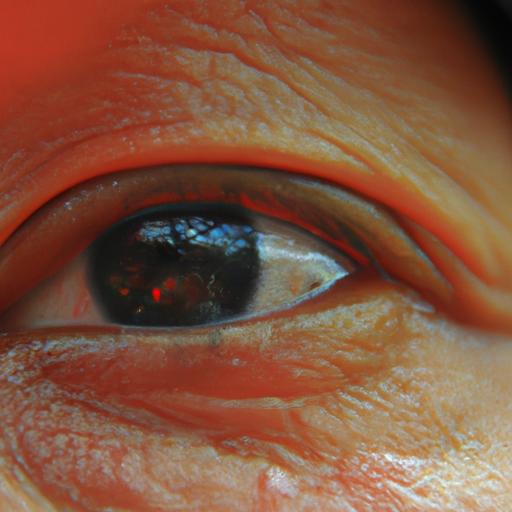Introduction
Have you ever wondered if the seemingly harmless act of fishing for mucus in your eyes could pose any dangers? Let’s delve into the world of mucus fishing syndrome and explore the potential risks it might entail. Mucus fishing syndrome refers to the compulsive habit of constantly removing excessive mucus from the eyes. While it may appear innocuous at first, this self-perpetuating cycle can lead to various complications and long-term damage if left unchecked.
Understanding the importance of recognizing the potential dangers associated with mucus fishing syndrome is crucial. By shedding light on this condition, we can empower ourselves to seek appropriate treatment and prevent further harm. So, let’s explore the causes, symptoms, and risks of this syndrome together.
Before we dive into the intricate details, let’s establish a clear understanding of what mucus fishing syndrome entails. This condition is characterized by an irresistible urge to constantly remove mucus from the eyes, often using various tools or even fingertips. The underlying causes can vary, ranging from allergic rhinitis and sinusitis to chronic dry eye syndrome or conjunctival irritation.
The significance of recognizing the potential dangers linked to mucus fishing syndrome cannot be overstated. By shedding light on this condition, we can gain a deeper understanding of its implications and take proactive measures to safeguard our ocular health. So, let’s embark on this enlightening journey together, exploring the causes, symptoms, and risks associated with mucus fishing syndrome.
Stay tuned for the next section, where we will unravel the causes of mucus fishing syndrome and unveil the factors that contribute to this perplexing habit.
Causes of Mucus Fishing Syndrome
Allergic Rhinitis and Sinusitis
One of the leading contributors to mucus fishing syndrome is allergic rhinitis and sinusitis. When individuals suffer from these conditions, their nasal passages become congested, leading to excessive mucus production. This excess mucus often drips down the back of the throat and can irritate the eyes, triggering the urge to fish for it. The constant presence of mucus in the eyes becomes a cycle that individuals find difficult to break.
Chronic Dry Eye Syndrome
Chronic dry eye syndrome is another common cause of mucus fishing syndrome. When the eyes fail to produce enough tears or the tears evaporate too quickly, the ocular surface becomes dry and irritated. In response, the body produces excess mucus to lubricate the eyes, leading to an uncomfortable sensation. Individuals suffering from chronic dry eye syndrome may unknowingly engage in mucus fishing as a self-soothing mechanism to alleviate the discomfort.
Conjunctival Irritation or Inflammation
Conjunctival irritation or inflammation can also trigger mucus fishing syndrome. When the conjunctiva, the thin membrane covering the front of the eye, becomes irritated or inflamed, it produces excessive mucus as a protective response. This mucus can accumulate and cause discomfort, prompting individuals to seek relief by removing it. Unfortunately, this act of self-removal can further exacerbate the irritation and perpetuate the cycle of mucus fishing.
By understanding the underlying causes of mucus fishing syndrome, we can gain insights into the factors that contribute to this habit. Allergic rhinitis and sinusitis, chronic dry eye syndrome, and conjunctival irritation or inflammation are the primary culprits behind this syndrome. In the next section, we will explore the symptoms and diagnosis of mucus fishing syndrome, allowing us to identify its presence and seek appropriate medical attention.
Stay tuned for the next section, where we will uncover the telltale signs of mucus fishing syndrome and delve into the diagnostic process.
Symptoms and Diagnosis
Recognizing the Telltale Signs
When it comes to mucus fishing syndrome, there are distinct symptoms that can serve as red flags signaling its presence. One of the primary indications is a persistent urge to remove excessive mucus from the eyes. This compulsive behavior often arises due to discomfort or a feeling of foreign matter in the eye. However, instead of providing relief, indulging in the habit of mucus removal only perpetuates the cycle, exacerbating the symptoms.
Alongside the incessant urge to fish out mucus, individuals with this syndrome may experience redness, irritation, and discomfort in their eyes. The constant rubbing and manipulation of the delicate ocular tissues can lead to inflammation, exacerbating the symptoms and causing further distress. It’s important to note that these symptoms can vary in intensity, depending on the severity of the syndrome and individual predispositions.
Seeking Professional Guidance
If you suspect that you may be experiencing mucus fishing syndrome or observe these symptoms in someone you know, it is crucial to seek medical attention for a proper diagnosis. While self-diagnosis may seem tempting, a qualified eye care professional can provide an accurate assessment and guide you towards the most effective treatment plan.
During the diagnostic process, the healthcare provider will carefully evaluate your symptoms, medical history, and conduct a thorough eye examination. This examination may include tests to assess tear production, ocular surface health, and the presence of any underlying conditions contributing to the syndrome. By obtaining a comprehensive diagnosis, you can gain a better understanding of the syndrome’s severity and receive appropriate guidance for managing the condition.
In the upcoming section, we will delve into the potential risks and complications associated with mucus fishing syndrome, shedding light on the hidden dangers that lie beneath the surface.
Potential Risks and Complications
Eye health is not something to take lightly, especially when it comes to mucus fishing syndrome. This seemingly harmless habit can lead to a range of risks and complications that can significantly impact your ocular well-being. Let’s explore some of the potential dangers associated with this condition.
Corneal Abrasions or Scratches
One of the primary risks of mucus fishing syndrome is corneal abrasions or scratches. Constantly rubbing or scraping the delicate surface of the eye can cause small injuries to the cornea, the clear outer layer that protects the iris and pupil. These abrasions can be painful and may lead to further complications if left untreated.
Eye Infections and Conjunctivitis
Another concern with mucus fishing syndrome is the increased risk of eye infections and conjunctivitis. The act of constantly touching the eyes with unclean hands or tools can introduce harmful bacteria or viruses, leading to infections. Conjunctivitis, commonly known as pink eye, can cause redness, itching, discharge, and discomfort. Prompt medical attention is essential to prevent the spread of infection and alleviate symptoms.
Long-term Damage to the Ocular Surface
Perhaps the most concerning consequence of mucus fishing syndrome is the potential for long-term damage to the ocular surface. The constant mechanical irritation and disruption of the eye’s natural tear film can disrupt the delicate balance necessary for optimal eye health. Over time, this can result in chronic inflammation, dryness, and even corneal scarring, impairing vision and overall eye function.
It is crucial to highlight the gravity of these risks and complications associated with mucus fishing syndrome. Understanding the potential harm that this habit can cause can serve as a powerful motivator to seek appropriate treatment and break free from the cycle of mucus removal.
In the next section, we will explore the various treatment options available for mucus fishing syndrome, allowing you to take proactive steps towards overcoming this condition and safeguarding your eye health.
Treatment Options
Educating Patients: Shedding Light on Risks and Dangers
When it comes to tackling mucus fishing syndrome, education is key. Healthcare professionals play a vital role in informing patients about the potential risks and dangers associated with this compulsive habit. By providing patients with comprehensive knowledge, they can better comprehend the ramifications of their actions and the importance of seeking proper treatment.
Behavioral Therapy and Habit Reversal Techniques: Breaking the Cycle
Addressing mucus fishing syndrome requires tackling the underlying behavioral patterns. Behavioral therapy, such as cognitive-behavioral therapy (CBT), can be highly effective in breaking the cycle of this compulsive habit. By working with a therapist, individuals can identify triggers and develop coping mechanisms to resist the urge to engage in mucus fishing. Habit reversal techniques, including awareness training and competing response exercises, can also aid in replacing the behavior with healthier alternatives.
Prescribed Artificial Tears and Lubricating Eye Drops: Soothing the Eyes
To alleviate discomfort and reduce the urge to fish for mucus, healthcare professionals may prescribe artificial tears and lubricating eye drops. These solutions help restore moisture to the eyes, combat dryness, and ease irritation. By maintaining proper lubrication, patients can experience relief and minimize the need to engage in mucus fishing.
Addressing Underlying Causes: Allergies, Dry Eyes, and More
In some cases, mucus fishing syndrome may be a consequence of underlying conditions such as allergies or dry eyes. Treating these root causes can significantly reduce the urge to engage in mucus fishing. Medical professionals may recommend allergy medications, antihistamines, or treatments to manage dry eyes effectively. By addressing the underlying causes, patients can experience long-term relief and break free from the cycle of mucus fishing.
Stay tuned for the next section, where we will explore preventive measures and the overall outlook for individuals dealing with mucus fishing syndrome.
Prevention and Outlook
Now that we have explored the causes, symptoms, and potential risks of mucus fishing syndrome, it’s time to shift our focus to prevention and the overall outlook for those affected by this condition.
Preventing mucus fishing syndrome involves adopting healthy eye hygiene practices. First and foremost, it is crucial to resist the temptation of constantly removing mucus from your eyes. Instead, try using lubricating eye drops or artificial tears prescribed by your eye care professional to alleviate discomfort and reduce the urge to fish for mucus.
Regular eye examinations play a vital role in preventing and managing mucus fishing syndrome. By visiting an eye care specialist, you can address any underlying conditions, such as allergies or chronic dry eye, that may contribute to the syndrome. Moreover, early intervention and prompt treatment can prevent further damage to the ocular surface and improve the overall prognosis.
It is important to note that overcoming the habit of mucus fishing can be challenging. Seeking professional help from an eye care specialist or a behavioral therapist can provide valuable guidance and support. Behavioral therapy techniques, such as habit reversal training, can help break the cycle of compulsive mucus removal and promote healthier habits.
In terms of the overall outlook, the prognosis for individuals with mucus fishing syndrome is generally positive when proper diagnosis and treatment are sought. By addressing the underlying causes and adopting preventive measures, the risk of complications and long-term damage can be significantly reduced. Remember, early intervention is key to preventing the progression of this syndrome and maintaining optimal ocular health.
In conclusion, while mucus fishing syndrome may seem like a harmless habit, it can indeed pose dangers to our eyes. By understanding the causes, symptoms, and risks associated with this condition, we can take proactive steps to prevent and manage it effectively. Remember to prioritize regular eye examinations, seek professional help when needed, and practice healthy eye hygiene. Together, we can navigate the complexities of mucus fishing syndrome and safeguard our precious vision.
Thank you for joining me on this informative journey. Should you have any further questions or concerns, I’m here to assist you.



